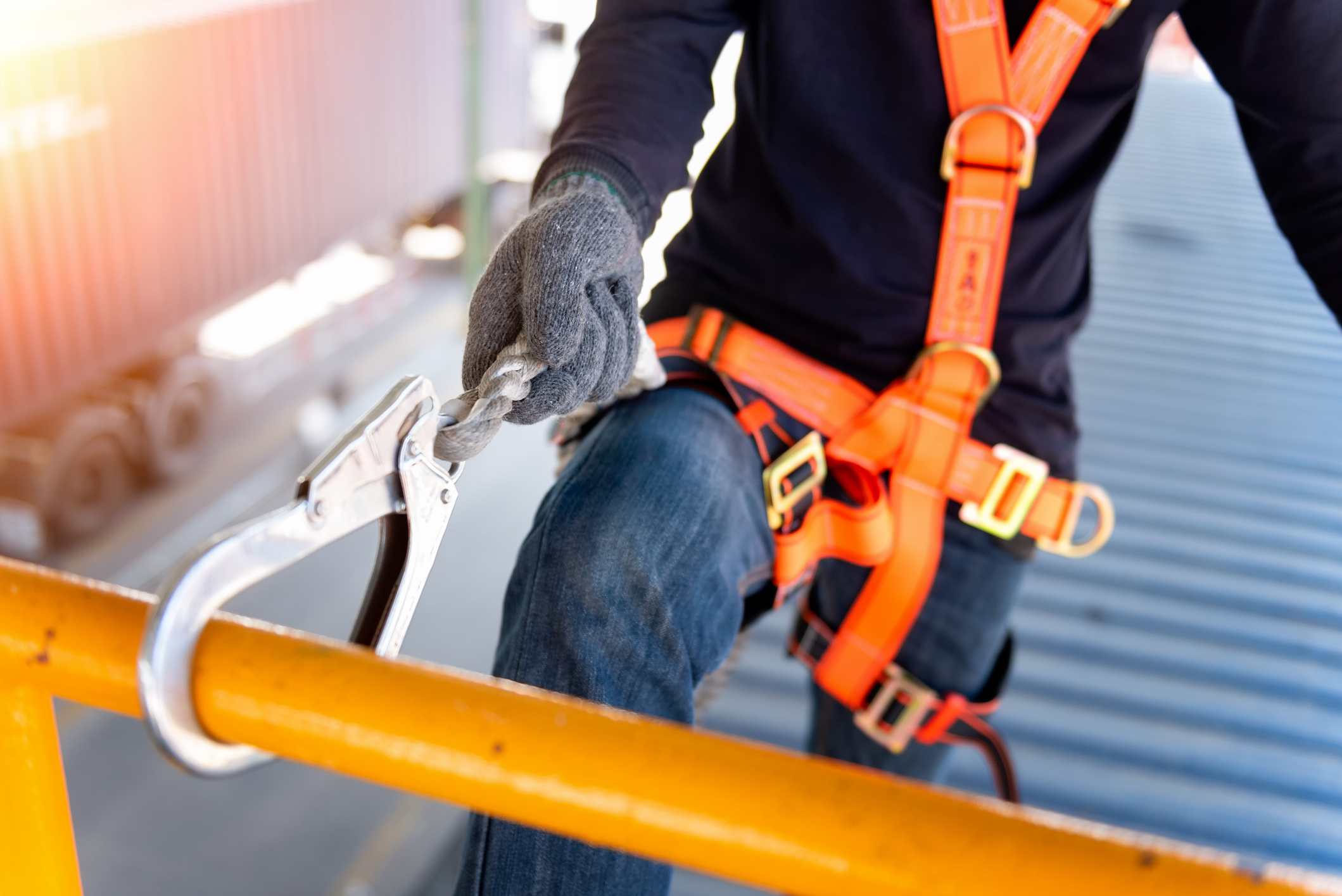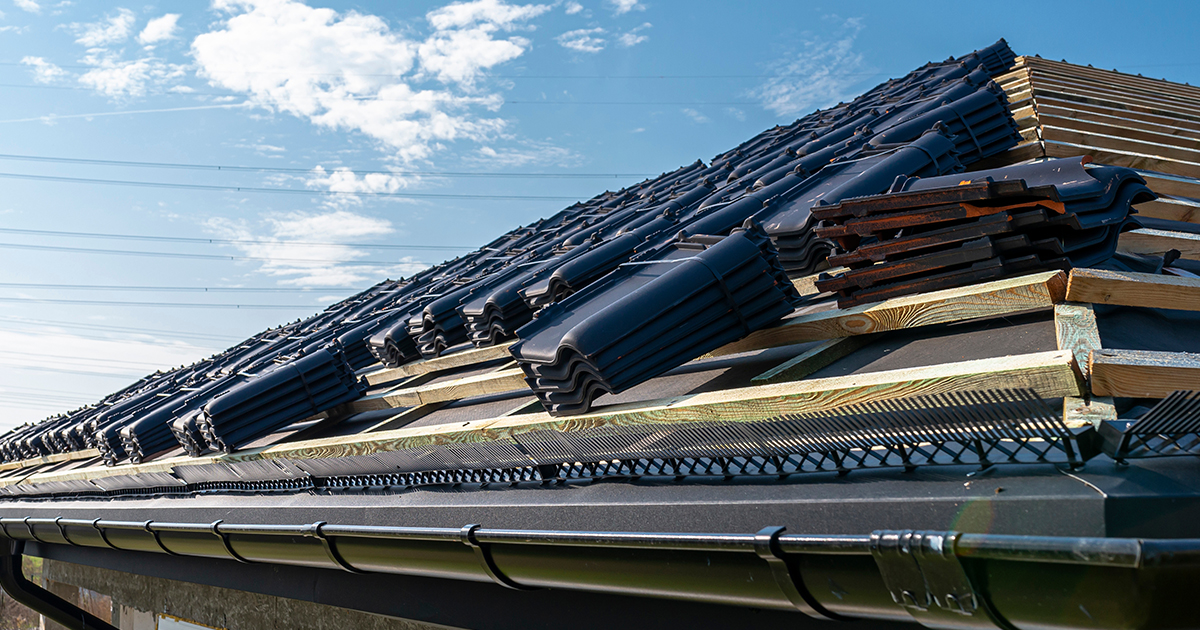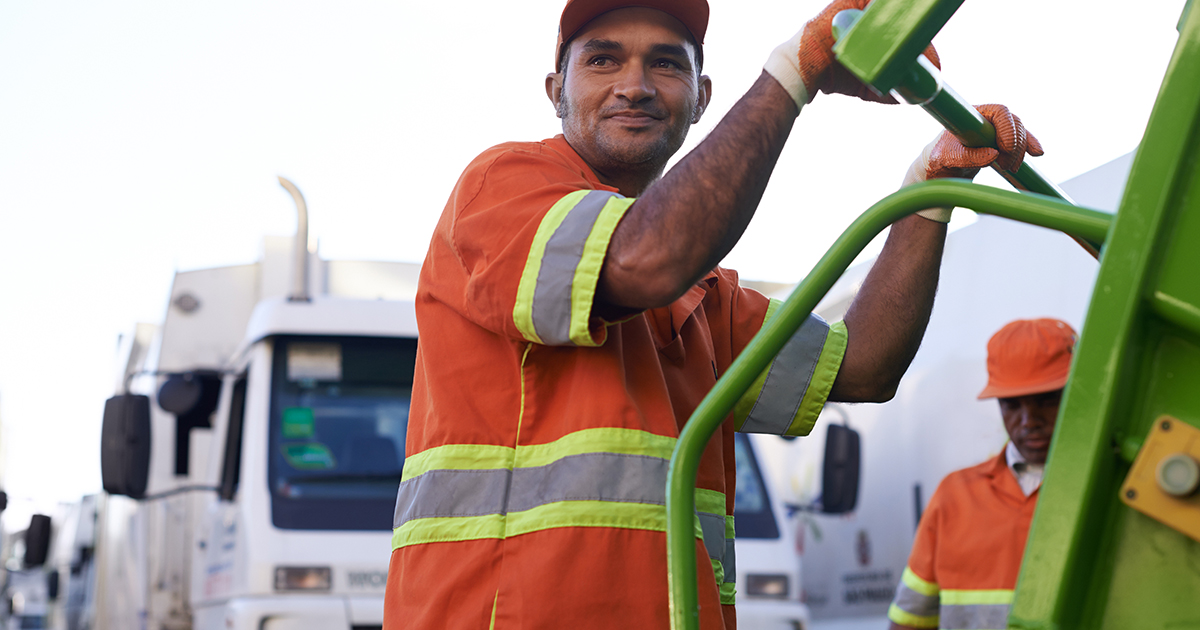
10 Most Dangerous Jobs for Personal Injury Accidents
Is Yours One of the Most Dangerous Occupations?
Working in certain industries can be hazardous to your health. In some cases, there is an elevated risk of being injured on the job. To help you stay safe and protect yourself from injury, here are the top 10 most dangerous jobs.
Logging Workers
Logging is one of the most hazardous jobs in the United States when it comes to personal injury accidents. The nature of the work itself involves workers having to climb trees, operate heavy machinery, and handle sharp tools and equipment.
There are potential hazards for workers in the logging industry, including falls, impact injuries, and cuts from sharp tools and wood fragments. Workers face potential harm while operating machinery, which can lead to severe injuries such as amputations and eye injuries. Loggers face potential dangers from extreme weather conditions, which can result in heat exhaustion or frostbite. Injuries experienced by workers include fractures, head injuries, and other serious injuries. When injuries occur, it is important for medical care to be obtained right away.
The use of chainsaws and other dangerous equipment, combined with the difficult terrain and uneven ground, can further increase the risk of personal injury accidents. These loggers tend to drive 18-wheeler logging trucks that are difficult to maneuver and also pose a potential hazard.
Those employed in the logging industry must adhere to strict safety measures, such as wearing protective clothing (such as eye protection), using proper safety equipment, and undergoing comprehensive training to minimize the risk of injury and promote a safer work environment for all workers.
Fishermen and Fisherwomen
Fishermen and Fisherwomen face a number of risks, including drowning, being caught in machinery, and being exposed to harsh weather conditions.
With the constant motion of waves and unpredictable weather patterns, fishing vessels can be vulnerable to capsizing, causing workers to be thrown into the water and potentially drowning.
Fishermen and fisherwomen often work with heavy equipment such as winches and nets, which can cause fatal occupational injuries if they are not properly maintained or used.
Sharp hooks and knives can also expose workers to cuts and puncture wounds, while slippery wet surfaces can lead to slips, falls, and other musculoskeletal injuries.
Another risk is exposure to inclement weather, which can cause injuries such as hypothermia, sunburn, and even frostbite.
Individuals interested in pursuing a career in this dangerous industry must undergo comprehensive safety training, wear appropriate protective gear, and be vigilant about proper safety procedures to minimize the risk of personal injury accidents.
 Roofers
Roofers
Workers in the roofing industry face numerous dangers, such as falling from heights, exposure to hot weather conditions, and suffering heat exhaustion.
Roofers often work from elevated heights on steep roofs on homes, resulting in falls that can cause serious injuries like broken bones, spinal cord injuries, paralysis, and even death.
An injury for roofers may also be caused by them being struck by heavy materials like shingles, tiles, and metal roofing materials, which can cause head injuries, concussions, and fractures.
Other risks include repetitive motion injuries, threat of electrocution and exposure to extreme temperatures, leading to hypothermia or heatstroke.
The physical strain of the job, including lifting and carrying heavy materials, can also lead to musculoskeletal injuries such as back pain, strains, and sprains. Workers are often exposed to hazardous materials like asbestos, which can lead to long-term health problems. Protective equipment should be used, but if an employer does not provide this equipment-that could pose a problem.
The use of power tools such as nail guns and saws can also cause serious injury if not operated correctly. Despite these risks, roofing work is necessary for the construction industry.
Commercial Pilots and Flight Engineers:
Piloting an aircraft is a high-risk job as it involves potential accidents caused by mechanical failure, collisions with other aircraft, and adverse weather conditions.
The long hours of sitting in the cockpit while controlling a high-speed aircraft can lead to musculoskeletal disorders, cardiovascular diseases, and blood clots.
Flight Engineers work in a confined space which exposes them to high levels of noise and intense technological radiation – factors known to cause hearing damage and other chronic illnesses, including cancer.
Aircraft Pilots and flight engineers must maintain physical and cognitive alertness at all times, especially during lengthy flights. The consequences of an accident in aviation can be catastrophic, leading to significant economic, social, and psychological losses.
Iron and Steel Workers
Iron and steel workers play a vital role in the construction industry, but working with heavy machines and materials exposes them to numerous risks.
One of the major risks that iron and steel workers face is falling from heights. Many construction projects involve working at elevated heights, such as when installing beams or working on skyscrapers. This exposure to height can lead to serious, if not fatal, injuries. Iron and steel workers can suffer spinal cord injuries, head trauma, broken bones, and internal injuries, and these are just a few examples.
They may also suffer from noise-induced hearing loss caused due to prolonged exposure to loud machinery noise.
Iron and steel workers work in extreme weather conditions and hot temperature environments, which can lead to heat exhaustion and heatstroke. They are exposed to welding arcs, fumes, and other hazards which create a risk of severe burns and even lung damage. Excessive heat places them at high risk of dehydration and other heat-related issues, leading to serious health complications and, in some cases, even fatalities.
Working in the steel industry requires immense physical effort. Heavy lifting, handling large machinery, and repetitive motions place them at risk of developing musculoskeletal disorders like back pain, neck pain, and arthritis.
The physical and mental strain of the job can also lead to exhaustion, fatigue, and job-related stress.
 Garbage Collector and Recycling Collectors
Garbage Collector and Recycling Collectors
Waste and recyclable material collectors play a crucial role in keeping our environment clean, but it is also one of the most dangerous jobs when it comes to personal injury accidents.
Waste and recycling collectors face unique risks that result from their daily work activities. They are constantly exposed to dangerous machinery, hazardous materials, and fast-moving vehicles.
The potential for equipment malfunction is high, and therefore workers are at a high risk of suffering severe cuts and puncture wounds resulting from sharp objects, or being struck by heavy machinery or machinery parts.
The job also requires workers to handle discarded chemicals, which may contain hazardous materials like batteries or electronic equipment. The risk of chemical exposure can cause respiratory distress, gastrointestinal problems, and skin irritation.
Workers are also at risk of being hit by the cars, trucks, and vehicles involved in collecting, removing, or transporting waste.
The use of large, heavy equipment, such as garbage trucks, can create dangerous conditions on the job, especially when operating on uneven terrain or in congested areas.
The workers often handle heavy or awkward materials (such as garbage bins), leading to musculoskeletal disorders, such as back or shoulder pain. Working irregular hours, and inadequate rest periods can also lead to physical and mental fatigue, affecting a worker’s alertness, response time, and ability to perform their work safely.
Farming and Agriculture Workers
Farming and Agriculture workers are essential industries that provide food and other agricultural products that are fundamental to daily life, but also rank high among the most dangerous jobs in terms of personal injury accidents.
Workers in agriculture face numerous hazards, including exposure to heavy machinery, dangerous livestock, and hazardous chemicals.
The use of large equipment, such as tractors and combine harvesters, exposes workers to risks such as overturning and being caught in machinery and can cause severe crushing injuries or amputations.
The presence of dangerous animals like bulls, horses, pigs and other livestock pose a significant risk of exposure to injury from farm animals.
Farmers are also exposed to hazardous chemicals, such as pesticides, herbicides, and fertilizers that can cause skin and respiratory system irritation, and even serious health issues such as cancer if adequate precautions are not followed.
Workers on farms are also exposed to extreme weather conditions, which can cause heatstroke, hypothermia, sunburn, and dehydration. The physical requirements of farming can cause musculoskeletal injuries, often leading to back pain, strains, and sprains.
The need for long hours of standing or working in uncomfortable and awkward postures can exacerbate these risks. Farmers largely work alone, diagnosis, and treatment of any injuries can be delayed, resulting in more severe medical problems down the road.
Farmers and Agricultural Workers are tenth on the list of the most dangerous job in America. Such employees face a fatal injury rate of 21.5 per 100,000 workers. Besides exposure to harmful farm chemicals, operating heavy machinery for extended hours has a toll on commercial farmers. This can result in crashes involving tractors. Farmers and agricultural workers, unlike those in most industries, can also include children. These children are at risk of fatal and nonfatal injury, as well. [1]
Construction Workers
Construction work is inherently risky. The physical nature of construction work exposes workers to common hazards such as falls from heights, being struck by falling objects, and electrocution.
Construction sites are known for their dangers, including improperly stacked building materials, unfinished floors, and uneven terrain, leading to slips and trips that can cause life-altering injuries.
Workers who work at a high elevation risk an increased risk of accidents due to falls from equipment platforms and scaffolding, which can result in deadly accidents.
The use of heavy machinery, such as cranes and bulldozers, increases the risk of being struck by large objects or accidents that can lead to amputations or other catastrophic injuries. Vehicle related injuries
are a common cause of accidents on construction sites.
Other risks include exposure to hazardous and toxic chemicals, extreme heat, and confined spaces, which can cause respiratory distress, burns, and heat exhaustion, and lead to permanent chronic illness and health conditions.
Construction work requires physical exertion, including bending, twisting, and lifting, which may lead to repetitive strain injuries like carpal tunnel syndrome or back pain. In addition, construction workers may experience long work hours, unpredictable schedules, and strict deadlines, which can result in the omission of breaks, exposure to dangerous conditions, and feelings of exhaustion and pressure.
Construction workers have a work related death rate of 48 per 100,000 FTE workers, which is the second highest on the list of most dangerous jobs. Falls from heights account for approximately 46% of all construction fatalities, making it the leading cause of workplace deaths and injury for these workers. Other primary causes of job fatalities for construction workers include electrocuting, being hit by an object or equipment, and getting trapped in or between objects.
Truck Drivers and Delivery Drivers
Transportation industry jobs involve high levels of physical exertion, irregular work schedules, and long hours of driving, exposing drivers to numerous risks.
Truck drivers are at risk of personal injury accidents caused by distracted driving, hazardous road conditions, and other driver’s negligence.
Truck accidents are often high-impact and can result in severe injuries or fatalities. As delivery personnel work under a tight schedule with the pressure to complete tasks within a short period, they are prone to stress and fatigue, which can result in impaired judgment.
Prolonged sitting and repetitive actions like lifting packages can lead to musculoskeletal problems such as back pain, strains, and sprains. Exposure to vibrations from poorly-maintained vehicles, such as shocks and other vibrations from the road, can also cause health problems like coronary heart disease and circulatory problems.
Long hours of driving can lead to mental stress and anxiety, increasing the risk of heart disease and other chronic illnesses.
Transportation incidents also accounted for about 40 percent of fatal injuries in 2016—the highest proportion six incident categories. [2]
Law Enforcement Officers
Law enforcement is a dangerous profession that poses a high risk for personal injury accidents. Police officers are often subjected to physical assault, high-speed car chases, and exposure to traumatic and dangerous situations, making it one of the most hazardous jobs.
Physical confrontations with suspects can lead to injuries such as concussions, fractures, and head injuries. This is compounded by exposure to other hazards like blunt force trauma, knife cuts, and gunshot wounds. The average salary for a police officer does not account for their increased risk.
Police officers who work on highways or pursue high-speed vehicle chases face the risk of being involved in a motor vehicle accident. The nature of law enforcement work often involves stressful situations that can lead to mental health problems, such as post-traumatic stress disorder (PTSD), depression, and anxiety.
Prolonged sitting, driving, and standing can strain muscles and lead to back problems, knee pain, and ankle injuries.
Exposure to harmful substances, bloodborne pathogens, and other infectious hazards can lead to health problems such as hepatitis, tuberculosis, and other communicable diseases.
The requirement to carry heavy equipment such as bulletproof vests, firearms, and other tactical gear places significant pressure on the back, shoulders, and neck.
What to Do if You or a Loved One Has Been Injured at a Dangerous Job Site in Nevada
Shook & Stone is a law firm in Las Vegas, Nevada, that provides legal support for people who have been injured on the job. Their experienced attorneys help injured workers navigate the complex legal system and obtain the compensation they deserve for their injuries.
When a loved one has worked in one of these deadly professions and paid the price, an experienced wrongful death attorney from Shook & Stone can handle the stressful communications for you and allow you to grieve.
The firm’s attorneys work closely with clients to build a strong case that demonstrates the severity of the injury, the circumstances surrounding the accident, and the extent of the damages incurred by the client. They have a thorough understanding of state workers’ compensation laws and are dedicated to ensuring that their clients receive all the benefits they are entitled to under the law.
Shook and Stone also provides pro-active and educational support to clients to ensure they know their legal rights and what benefits they are entitled to receive. Their attorneys have experience working with insurance companies and can negotiate on behalf of the client to ensure their rights are protected.
They will fight vigorously to protect clients’ rights, to ensure they receive the compensation they are entitled to, and to help them make a full recovery from their injuries.
If you have suffered a personal injury at work, Shook & Stone can provide the legal support you need to receive the compensation you deserve. The firm’s attorneys strive to offer quality, compassionate legal services for injured workers, ensuring that they have the strongest possible legal representation to protect their rights. Call today for a free consultation at (702) 570-0000.
Sources:
[1] Protecting Agriculture’s Future: National Farm Safety and Health Week | NIOSH | CDC. (2022, August 30). Protecting Agriculture’s Future: National Farm Safety and Health Week | NIOSH | CDC. https://www.cdc.gov/niosh/newsroom/feature/protecting-agriculture.html
[2] Wire, T. M. (n.d.). 15 most dangerous jobs in the United States. 15 Most Dangerous Jobs in the United States. https://www.princegeorgecountyva.gov/news_detail_T6_R1402.php
 Clear
Clear How to Prove Liability in a Las Vegas Dog Bite Case
How to Prove Liability in a Las Vegas Dog Bite Case 